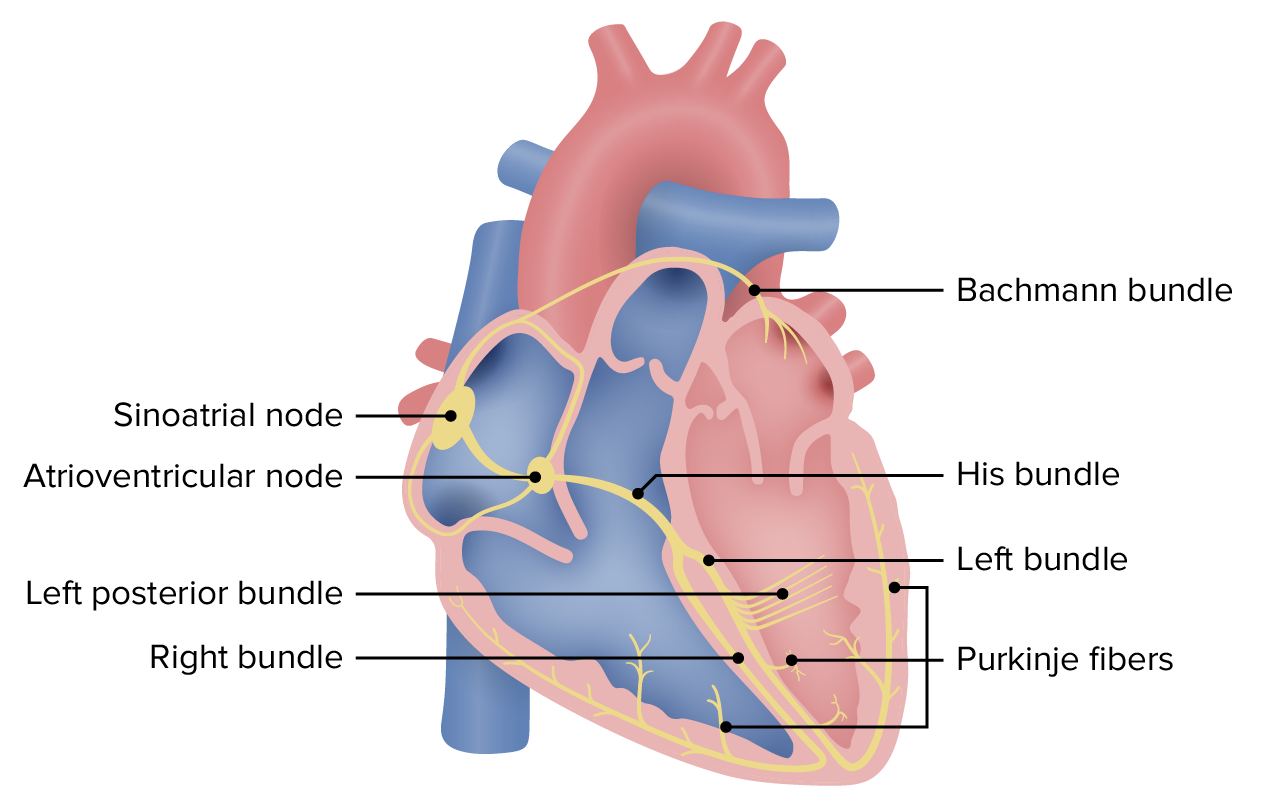Playlist
Show Playlist
Hide Playlist
ECG of Torsades de Pointes
-
Slides Ventricular Arrhythmias.pdf
-
Download Lecture Overview
00:01 There's a special form of ventricular tachycardia/ventricular fibrillation has a French name Torsades de Pointes. 00:09 That - it comes from the Ballet term, so Torsades de Pointes means spinning around a point in which their showing you that there's wide complex ventricular tachycardia and then narrow and then wide and then narrow. 00:21 And you notice it looks a little bit like a party streamer; wide, narrow, wide, narrow. 00:27 And sometimes even there can be periods of ventricular fibrillation and then returning to Torsades. 00:34 Usually, the blood pressure is very low and the patient has cardiac arrest. 00:39 The QRSs keep changing their direction and sizes like the party streamer and it's often the result of a drug toxicity. 00:48 For example, we'll talk about that in a later lecture for example many of the central nervous system drugs have an increased risk for the development of this arrhythmia or it’s due to markedly decreased blood potassium or markedly decreased drug - blood magnesium. 01:05 Here's another example, a little more like a cartoon. 01:09 Notice spinning around a point; larger QRS, narrow, larger QRS, narrow. 01:14 Notice there's a certain rhythmicity to it. 01:16 It's also called polymorphic or multiple formed ventricular tachycardia as opposed to the examples you saw before where all the QRSs looked the same. 01:27 Blood pressure is zero or near zero. It is a very malignant arrhythmia that can lead to death.
About the Lecture
The lecture ECG of Torsades de Pointes by Joseph Alpert, MD is from the course Electrocardiogram (ECG) Interpretation.
Included Quiz Questions
Which of the following ECG findings is characteristic of torsades de pointes?
- Multiple QRS sizes
- Mainly wide QRS waves
- No electrical activity
- Mainly narrow QRS waves
- Peaked T waves
Customer reviews
5,0 of 5 stars
| 5 Stars |
|
5 |
| 4 Stars |
|
0 |
| 3 Stars |
|
0 |
| 2 Stars |
|
0 |
| 1 Star |
|
0 |







